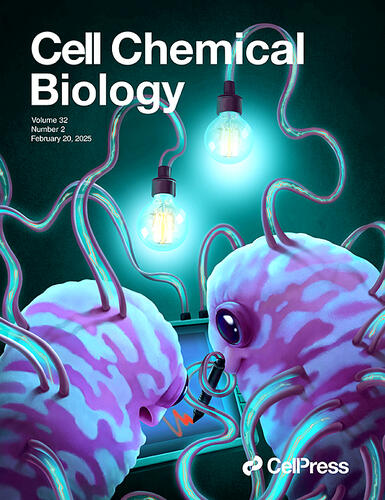
Discovery of nanowire assemlby machinery Cell Chemical Biology 32, 239-254.e7 (2025) is Selected for the Cover
On the cover: In oxygen-deprived environments, such as in deep oceans or underground, Geobacter bacteria (purple organisms) utilize tiny protein filaments known as “nanowires” (purple projections) to manage excess electrons generated during metabolism. These nanowires not only enable the bacteria to clean up radioactive sites but also facilitate electricity generation (light bulbs). To harness the potential of these microbes, understanding the assembly of nanowires is crucial.
Shen et al. detail the discovery of the machinery responsible for nanowire assembly, enabling practical applications. Additionally, the team demonstrated that optimizing certain components can enhance both nanowire production and bacterial growth. This advancement represents a step forward in engineering bacteria for efficient electricity generation, pollutant clean-up, and the reduction of atmospheric methane levels.
Image credit: Sibel Ebru Yalcin and Ella Maru Studio (schematics).
C. Shen#, A. Salazar-Moralez#, Y. Gu#, F. Samatey#, J. Erwin#, A. Coelho#, S. Yalcin#, N. Malvankar*. A widespread and ancient bacterial machinery assembles cytochrome omcS nanowires essential for extracellular electron transfer. Cell Chemical Biology 32, 1–16, (2025). Tweetorial; Yale Highlight YaleNews - Insights & Outcomes